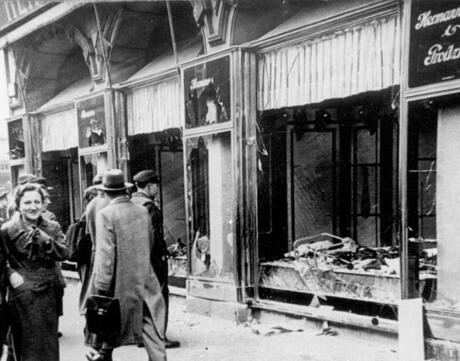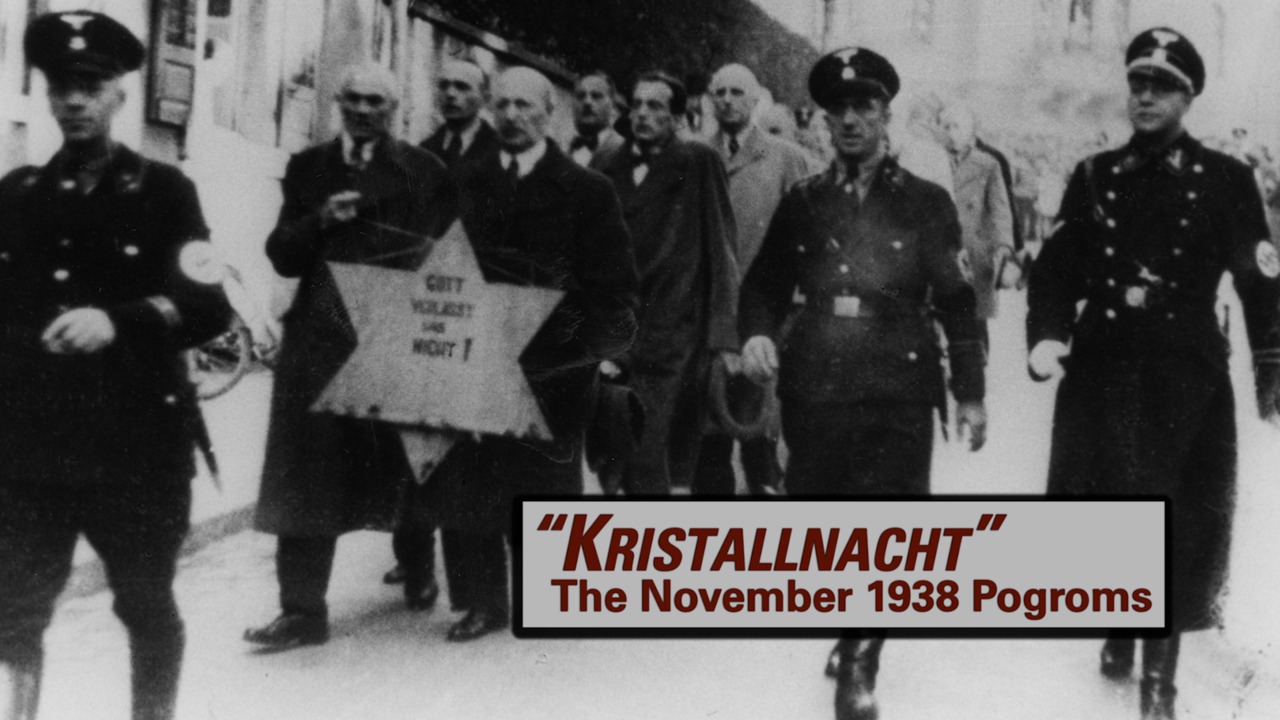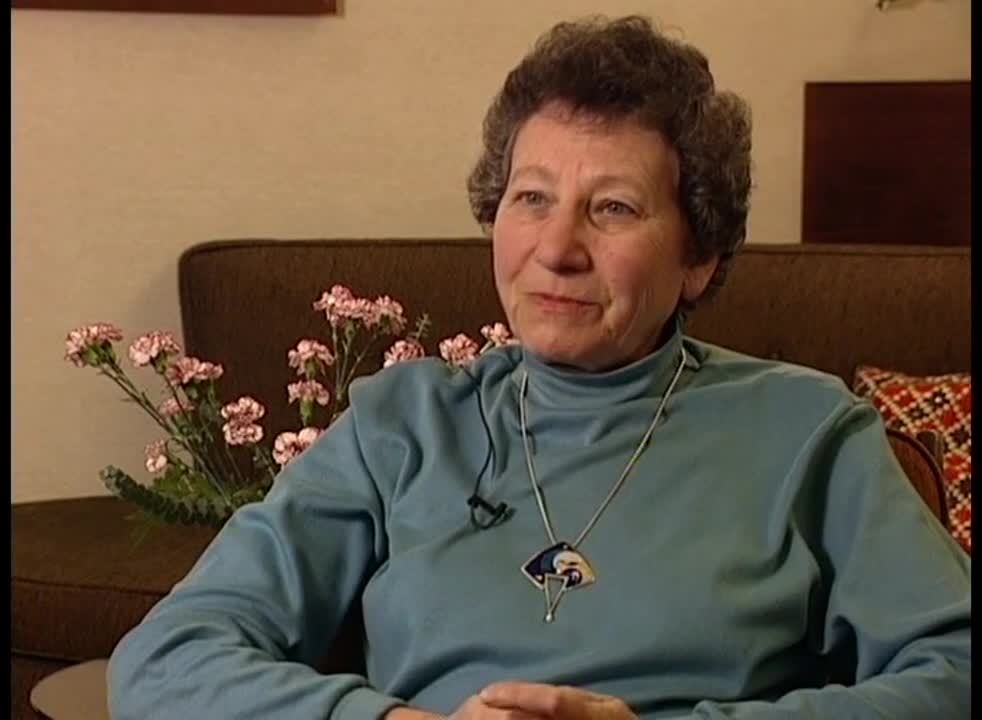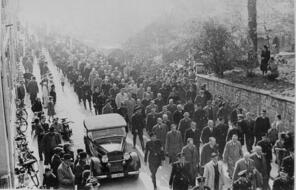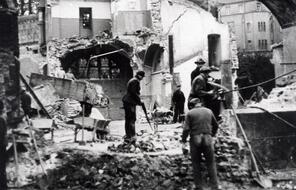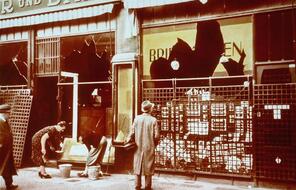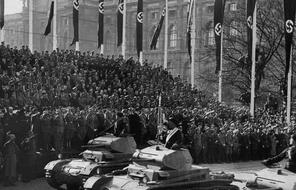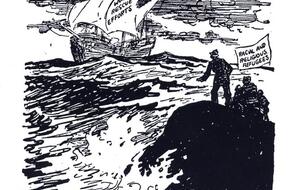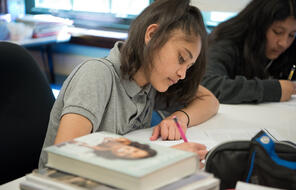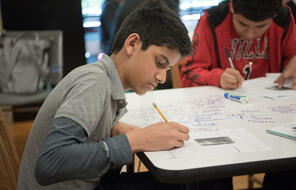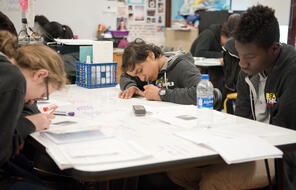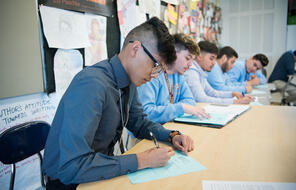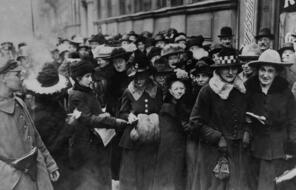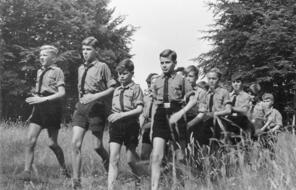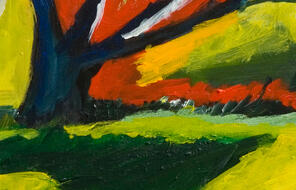In the second half of the 1930s, the Nazis became openly aggressive toward neighboring countries and increasingly violent against Jews and other targeted minorities within Greater Germany.
By 1935, Hitler’s efforts to rebuild the German military forces (which had begun in 1933 in violation of the Treaty of Versailles) became public, and Germany began taking steps toward expanding the Third Reich across all of Europe. The first steps included annexing Austria (an act known as the Anschluss) and the part of Czechoslovakia called the Sudetenland, territories inhabited by so-called “true Germans” who Hitler believed ought to be part of the Reich. Fearful of igniting a new world war, the leaders of other countries were unwilling to oppose with military force Hitler’s demands for these territories. As a result, Germany expanded into Austria and Czechoslovakia without firing a shot. (The Nazis’ plans to expand Germany’s “living space” are explored in more detail in the next lesson.)
The German takeover of Austria and the Sudetenland increased the number of Jews affected by Nazi restrictions, while at the same time discrimination intensified to the point where Jews were effectively removed from German public life. This meant that Germany’s aggressive steps to expand its borders touched off both an international political crisis, as world leaders scrambled to avoid war, and a humanitarian refugee crisis, as hundreds of thousands of people, mostly Jews, sought safety from the Nazis.
The ineffective international response deepened the peril in which Jews in the Reich found themselves. The danger became even more dire on November 9–10, 1938, in what was called Kristallnacht (Night of Broken Glass)—the worst outbreak of terror and violence against Jews all over Germany since the Nazis came to power.
On that night, according to the Nazi propaganda, “the German people” spontaneously took revenge on the Jewish people for the murder of a Nazi diplomat in Paris by a young Jewish man named Herschel Grynszpan. In reality, the violence had been planned and organized by the Nazis, and carried out by the SS, SA, Hitler Youth, and other Nazi groups.
By the morning of November 10, they had destroyed thousands of Jewish homes and businesses, and they had set fire to 191 synagogues, the centers of Jewish social and spiritual life, in every part of Greater Germany. Fire departments were instructed not to put out the fires but merely to stand by and make sure that adjacent property did not go up in flames. Although the exact figure is not known, it is likely that anywhere from 1,500 to 3,000 Jews died as a result of the violence and 30,000 others were afterward sent to concentration camps. Two days later, the German government fined the Jewish community one billion marks for “property damaged in the rioting.”
In this lesson, students will learn about the events of November 9–10, 1938, and they will explore the choices a variety of people made during and after this violent crisis to participate in the violence, help those who were targeted, or look the other way. This lesson introduces important terms that help us understand this range of human behavior in times of crisis. The roles of perpetrator, victim, bystander, and upstander can be assumed by individuals, groups, or even nations. But it can be difficult to define each term clearly. For example, under the label upstander, we often list those who take a variety of actions, including resistance and rescue. However, upstanders might also include those who are able to maintain a part of their identity despite opposition, such as people who continue to secretly practice their religious faith or others who refuse to give up hope. The term bystander can be even more complicated. In most dictionaries, it means a person who is simply “standing by” or who is present without taking part in what is going on—a passive spectator. But some scholars, like psychologist Ervin Staub, believe that even passive spectators play a crucial role in defining the meaning of events by implicitly approving the actions of perpetrators. The choice not to act or speak up is still a choice.
It is important to recognize that it is not these labels themselves, as words, that matter; it is the way we think and talk about the actions (or inactions) of others that helps us both understand history and make connections to the choices we all make in the present. In addition, it is important to remember that individuals and groups usually do not fit into only one category. Instead, they may move into and out of these roles throughout their lives.
But studying this history and others with these terms in mind, despite those limitations, allows us to think about the agency of individuals, groups, and nations—their ability to recognize the options available to them and make choices that impact their own lives, the lives of others, and the course of history. By reflecting on the agency of individuals, groups, and nations in historical context, we can better understand the possibility and power of the choices available to us today.
